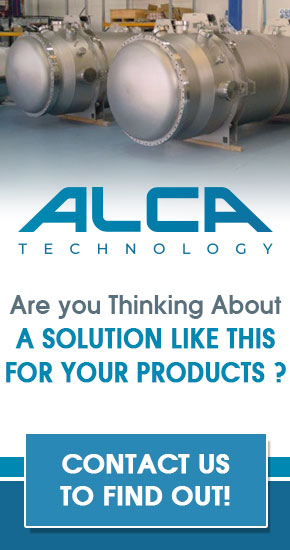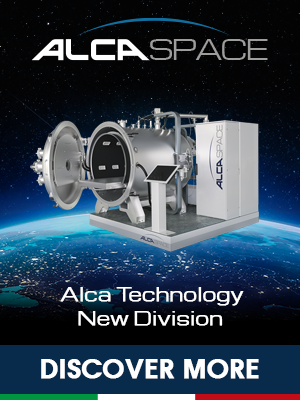Eliminate The Water in a Vacuum Chamber by Freezing It: is it Possible?

The presence of water, in the form of steam, is always a problem in vacuum processing. The molecules of H2O, in fact, are highly polar due to the strong difference in electronegativity (ie the ability to attract the binding electrons to itself), respectively, of the oxygen atom compared to the two of hydrogen. A consequence of this characteristic on a sub-nanometric scale is the strong tendency of water molecules to adhere to metal surfaces or to those of materials capable of giving secondary bonds or hydrogen bonds. In the case of metals and, more specifically, in the case of stainless steel, it is the presence of the surface, protective layer of chromium oxide, which offers an excellent "coupling" to the H2O molecules. Furthermore, in the processed materials there may be water chemically adsorbed on the surfaces or - in some cases - present in the structure of the material itself.
This water must be eliminated from the pumping system available in a specific system for vacuum processing, considerably lengthening the time required to achieve the required basic vacuum level. What commonly happens, in fact, is that the pumping kinetics of water vapor is determined and often dominated not only by the capacity of the pumps available, but also by the desorption kinetics of the water molecules "anchored" on the metal surfaces and those of the substrates to be to deal. For this reason, it is quite common to use heating systems inside the vacuum chamber designed to speed up the release of most of the so-called "water load" present.
In any case, the pumping of water vapor represents a problem in itself as many types of vacuum pumps - and in particular the rotary ones in oil bath - have limits from this point of view, also depending on the particular type of sealing oil used. In fact, the water that passes through a pump of this type can accumulate in the oil present, increasing the value of the base pressure
obtainable and thus degrading the performance of the machine.
We can therefore ask ourselves if there are alternative systems to manage the "water load", especially in cases where the latter is conspicuous, with the aim of preventing water vapor from passing through the pumping system, but eliminating it anyway from the work environment. A practical example, with which we had to compare ourselves, concerned the need to evaporate metallic coatings for decorative purposes on paper substrates. Paper is a cellulose-based material, which is therefore very hydrophilic: the "water load" in this case can be very high and the desorption kinetics very slow. It is therefore an application that is difficult to manage by a standard pumping system, based on the use of a rotary pump in an oil bath.
One possibility, which is often brought up by designers, concerns the use of a system capable of freezing the water vapor, inside the vacuum chamber, on a suitably cooled surface. In principle, an external refrigeration unit could be used to create a flow of a heat carrier fluid which, flowing inside a metal coil placed inside the vacuum chamber, could "capture", freezing it, the water vapor present. To achieve this effect, always theoretically, it would be enough for the heat transfer fluid to have a temperature below 0 ° C, or the freezing point of the water: this would allow to solve the problem by using very cheap and widely available refrigeration units.
Unfortunately, the reality of the facts, as often happens, is quite different. In fact, the mere fact that a material is in a solid state does not guarantee that the vapor pressure of the material itself, at the temperature in which it is found, is sufficiently low. The vapor pressure is the equilibrium pressure of the considered solid-vapor system, which depends not only on the chemistry of the system but also on the temperature. For example, there are many solid substances that have a relevant vapor pressure: a practical example is naphthalene. The process by which vapors are released from a solid material, without passing through the liquid state, is perfectly possible and is called sublimation.
In the case of water ice, the vapor pressure is remarkably high: for example, at -25 ° C it is 6.7 mbar, at -70 ° C it is 2x10-2 mbar, while to reach acceptable basic values for a normal vacuum processing, such as 1x10-5 mbar, it is necessary to go down to -112 ° C!
Therefore, the use of normal refrigeration units for this application is excluded, as the lower temperature limit that can be reached in a normal single-stage system is around -50 ° C. It is therefore necessary to use, if you want to adopt this strategy for the management of the "water load", a more complex system, based for example:
• on a two-stage refrigeration system. Commercially, this strategy has been implemented in several systems, among which the most famous is probably the so-called “Polycold”.
• On other systems capable of reaching the low temperatures required: for example, a system based on the circulation of liquid nitrogen (-196 ° C) can be used, or -for lower thermal loads- on the use of Stirling coolers.
Conclusions
The use of cryogenic systems for managing the "water load" in a vacuum deposition plant is a possible strategy, however "do it yourself" is not recommended, as the low temperatures required are not achievable with cooling systems simple and cheap. The cooled surfaces, capable of capturing water vapor, must be at temperatures of at least -110 ° C, making the use of fairly sophisticated and expensive equipment essential.


